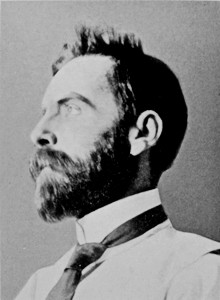
Carl Joseph Begas, or Karl Begas, was a German painter who played an important role in the transition from Romanticism to Realism. He was the first in a multi-generational "dynasty" of artists.

Karl Christian Ludwig Hofer or Carl Hofer was a German expressionist painter. He was director of the Berlin Academy of Fine Arts.

Franz Karl Eduard von Gebhardt was a Baltic German painter of portraits and historical scenes, and a professor at the Kunstakademie Düsseldorf.

Karl Wilhelm Hübner was a German landscape and genre painter, in the Romantic style.

Carl Eduard Ferdinand Blechen was a German landscape painter and a professor at the Academy of Arts, Berlin. His distinctive style was characteristic of the Romantic ideals of natural beauty.

Johann August Eduard Mandel (1810-1882) was a German engraver.

Karl Rauber was a Swiss history, landscape, and genre painter.

Andreas Johann Jacob Heinrich Müller was a German religious artist; associated with the Düsseldorfer Malerschule.

Friedrich von Keller was a German genre painter.

Julius Amatus Roeting was an Austrian painter.

Friedrich Kallmorgen was a German Impressionist painter who specialized in landscapes and cityscapes.

Paul Carl Leygebe was a German painter and anatomy professor at the Prussian Academy of Arts in Berlin.

Max Friedrich Koch was a German history painter. Later as professor he taught art at the Unterrichtsanstalt des Kunstgewerbemuseums Berlin ; head of the academic master's studio for monumental painting, theatrical and decorative painting.

Ferdinand Julius Wilhelm Laufberger was an Austrian painter and etcher.

Alois Erdtelt was a German portrait painter and art teacher.

Carl Blos was a German portrait, landscape and genre painter.

Hans Looschen was a German landscape, portrait and genre painter. He also created some illustrations.

Adolf Gustav Schlabitz was a German portrait and genre painter.

Heinrich Lauenstein was a German painter and art professor; associated with the Düsseldorfer Malerschule. He specialized in portraits, many of them of children, and religious scenes.

Hugo Crola was a German portrait, landscape and genre painter, associated with the Düsseldorfer Malerschule.





















